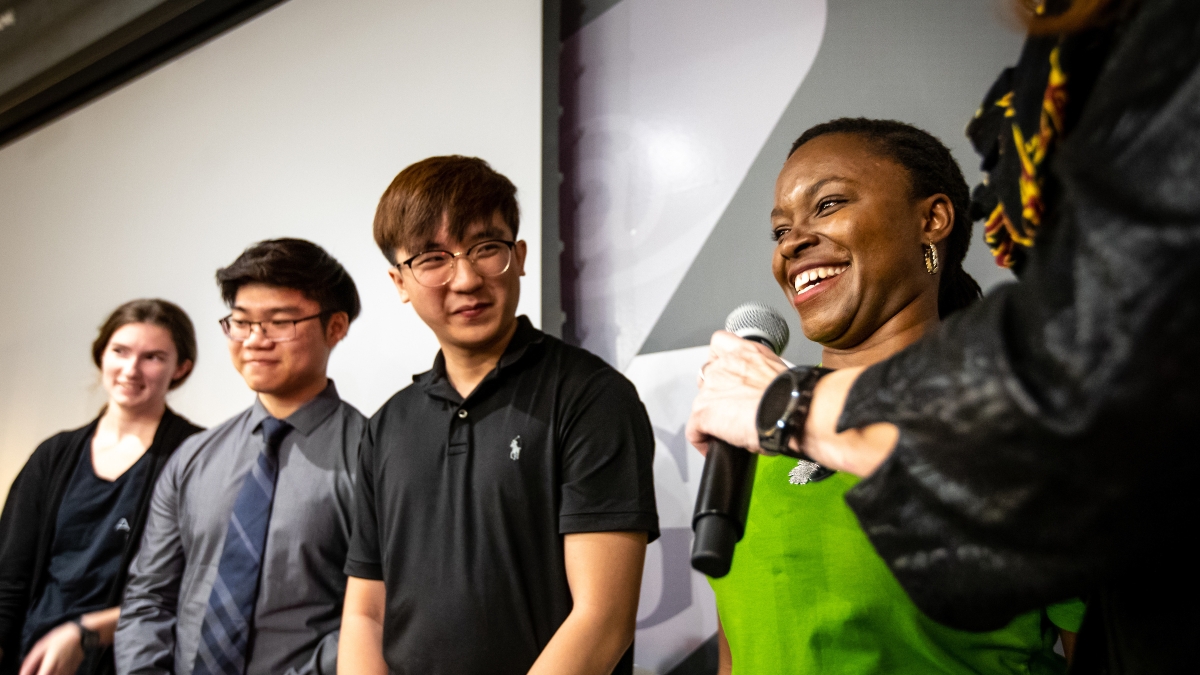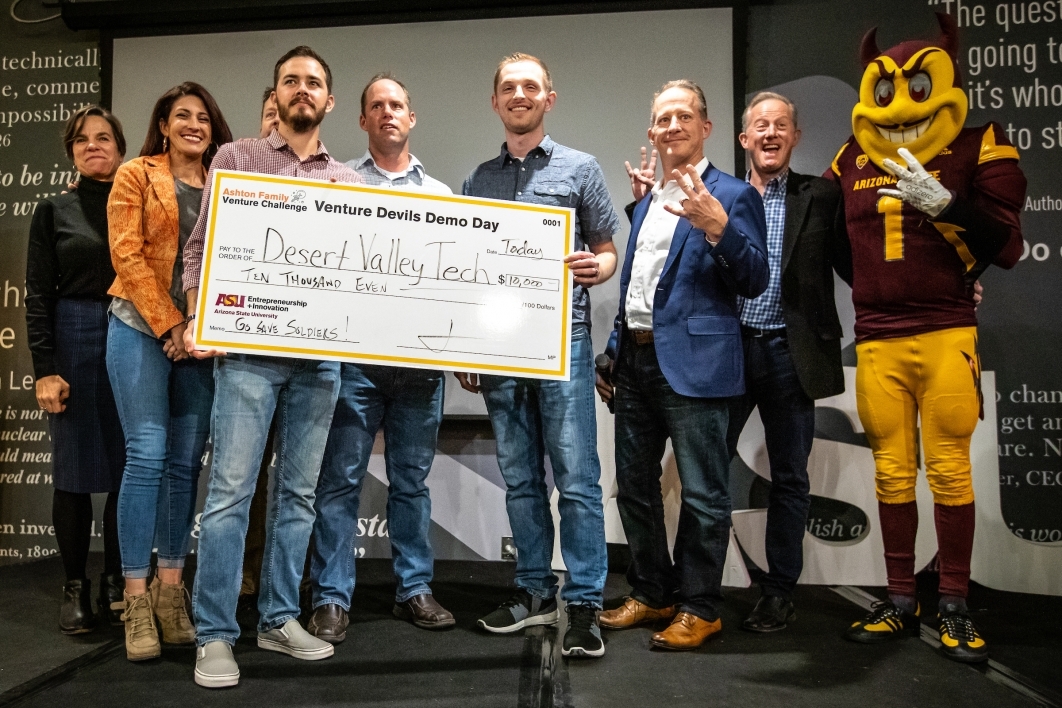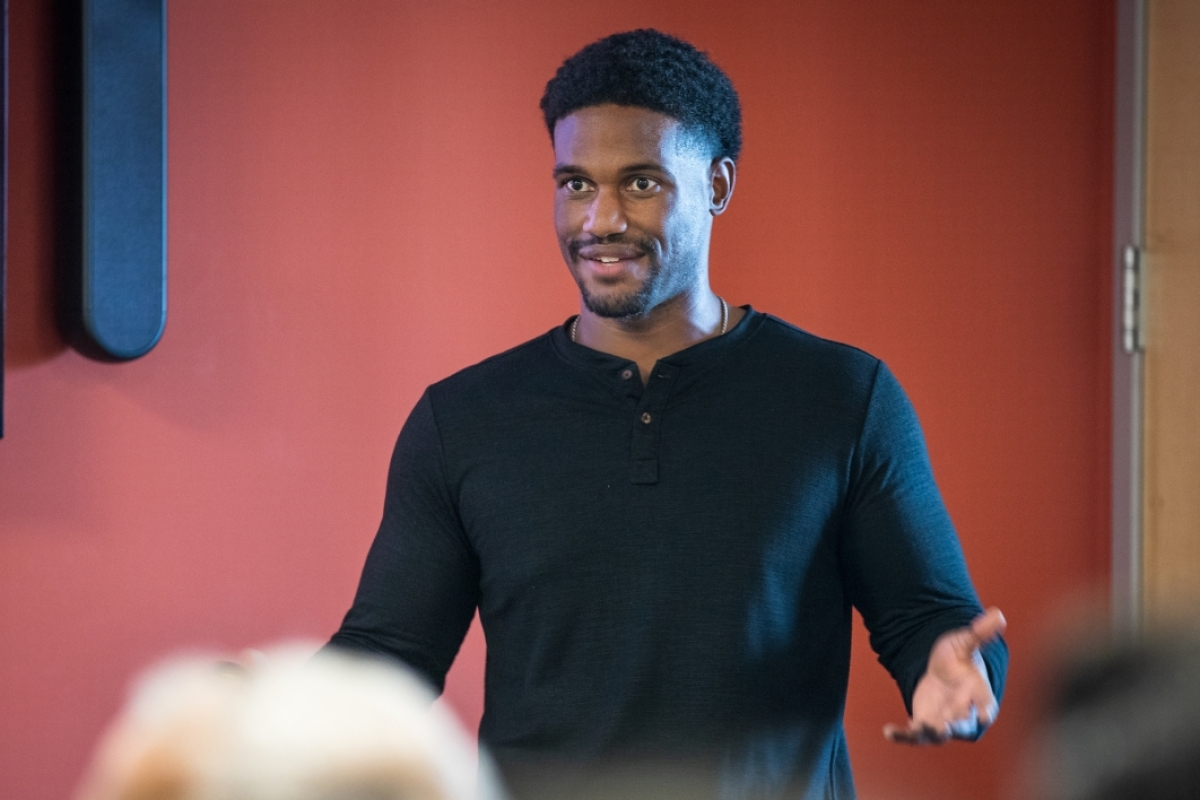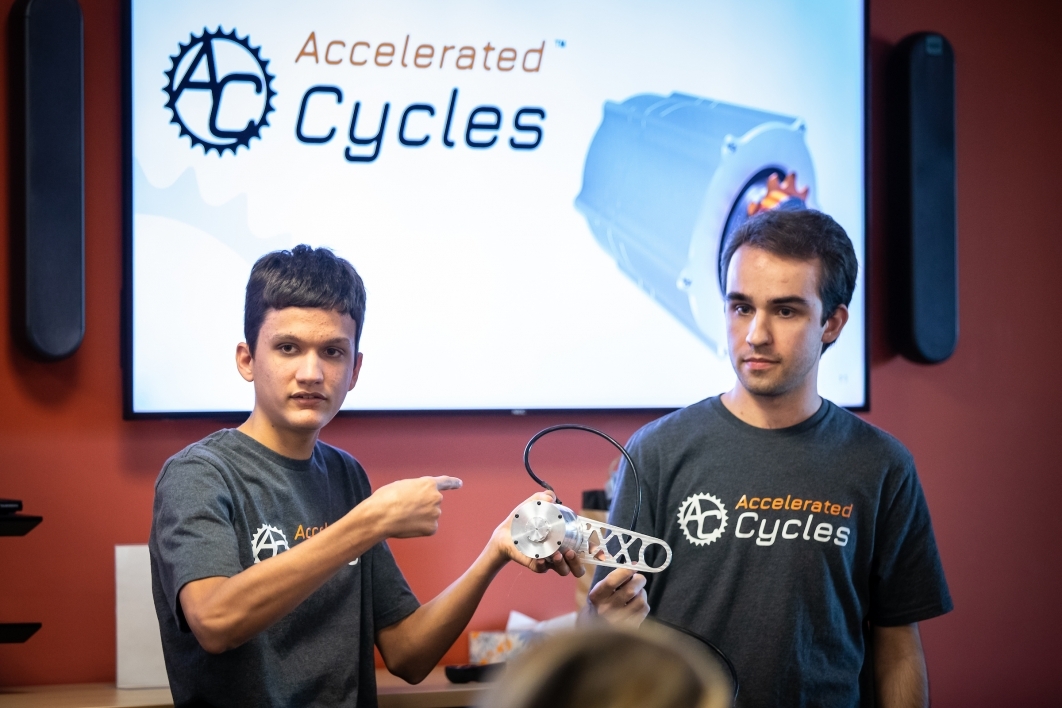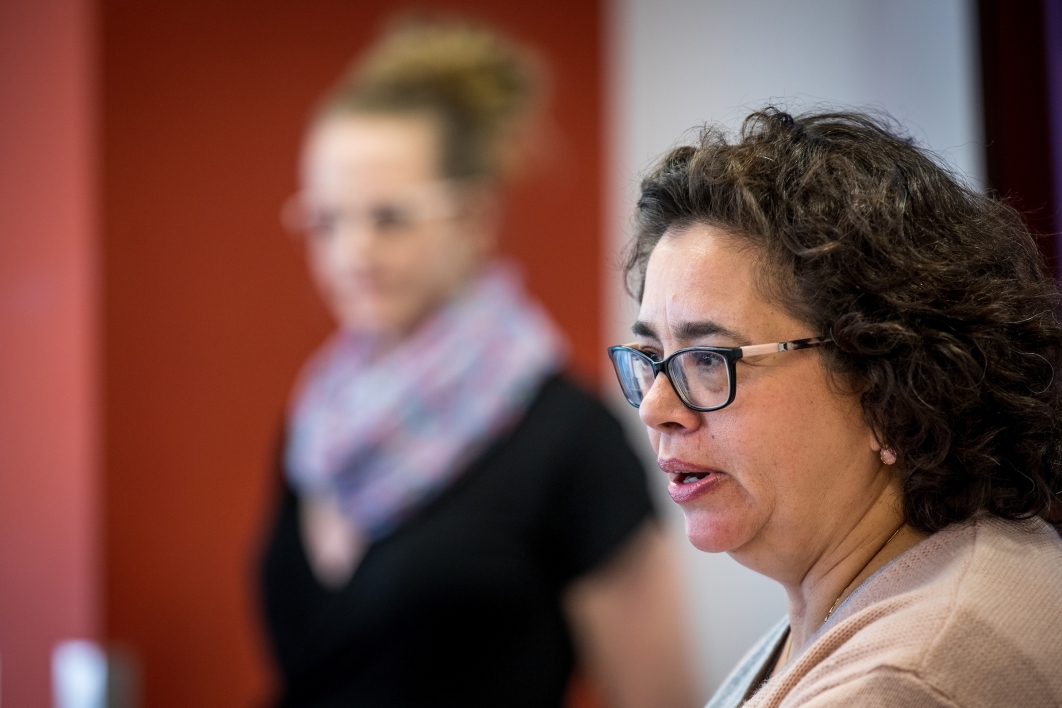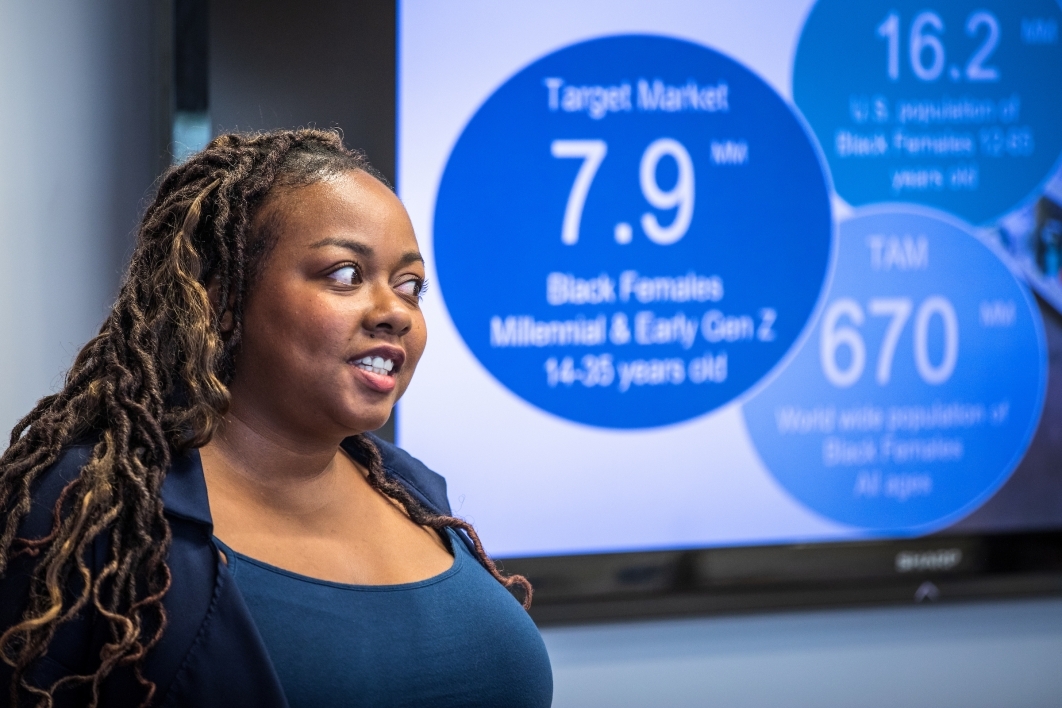Dozens of entrepreneurs in the Arizona State University community are working on life-changing startup ventures, and on Friday, several were rewarded with thousands of dollars in investment capital at the Demo Day pitch competition.
Some of the winning projects were:
• Emily Karlzen, a senior majoring in business entrepreneurship with a minor in construction management, invented a helmet for tourists to wear in space. Her company, Arch Rift, won $15,000 in the eSeed Challenge.
• Travis Witzke, an Army veteran and ASU alum, won $10,000 in the Ashton Family Venture Challenge for his company, Desert Valley Tech. Haunted by his experiences during deployment to Iraq, he invented a device to preserve whole blood on the battlefield to increase the chances of saving lives.
• Pauline Nalumansi, a graduate student in the Thunderbird School of Global Management, won $5,000 for the Pauline Foundation, a nonprofit she created to help empower at-risk youth in Uganda, her home country.
They were among 80 startups that won more than $150,000 in investment funding Friday through Venture Devils, a program in the office of Entrepreneurship and Innovation at ASU that provides space, mentorship and access to funding to ASU students, faculty, staff, alumni and community members. The teams pitched their ventures to a panel of judges in six funding competitions at the event, held at SkySong in Scottsdale.
Some of the winners have already won investments from previous pitch competitions. EnKoat, a company that invented energy-efficient building coatings, was the biggest winner of the day with $20,000 from the Edson Student Entrepreneur Initiative, and also won $15,000 at Demo Day last spring. EnKoat’s co-founders, Aashay Arora and Matthew Aguayo, engineering doctoral students at ASU, were named to the Forbes “30 under 30” list earlier this month. ASU engineering alumni Kevin Hale and Grayson Allen developed GateSense, a technology that allows users to lock and unlock gates from anywhere through a mobile app. Their company, Halen, won $15,000 at Demo Day last year and then $10,000 on Friday
class="glide image-carousel aligned-carousel slider-start glide--ltr glide--slider glide--swipeable"
id="glide-478480" data-remove-side-background="false"
data-image-auto-size="true" data-has-shadow="true" data-current-index="0">
data-testid="arrows-container">
While pitching to the judges, several of the entrepreneurs shared how they learned hard lessons during the startup process. Ricky Johnson, an ASU alum, is CEO of Barrage Training Tech, and invented a pressure-sensitive sleeve that wraps around a punching bag so workouts can be done without a trainer. He described how he took the first prototype to some local boxing gyms for boxers to try out.
“It was horribly ugly and it had duct tape and hot glue on it and batteries were flying everywhere,” he said.
So Johnson, who earned a degree in computer engineering at ASU in 2017, spent months and a lot of money to refine his prototype, and on Friday, he won $3,000 in the Global Sport Venture Challenge competition.
Retail Devils, a new competition funded by Follett, awarded a total of $10,000 in seed grants to several ventures on Friday. The initiative was created earlier this year to ease the way for students to sell products at the Sun Devil Marketplace stores, according to Tracy Lea, assistant director of venture development in Entrepreneurship and Innovation at ASU.
“A point of pride at ASU is our collaboration. So we started to think about how we unencumber the process. We lowered the barrier to entry,” said Lea, who added that two “pop-ups” have been held to sell students’ merchandise.
Another new funding competition this year is the Sarsam Family Venture Challenge, which awarded $15,000 in grants, including $10,000 to RIVIS Surgical, a startup that was created by a team of biomedical engineering students and aims to prevent medical complications.

Senior Emily Karlzen pitches her space-helmet invention to the judges at Demo Day on Friday at SkySong. She won $15,000 in investment funding. Photo by Charlie Leight/ASU Now
The winners will use the investment cash to create or refine prototypes, file for patents or market their startups. Karlzen has mockups of her positive-pressure space helmet but wants to use her winnings toward creating a functioning prototype. She is planning to sell her space-tourism helmet to space-suit manufacturers by 2022. Last month, Arch Rift won the NewSpace Business Plan Competition for space ventures in Texas.
“I’m a giant space nerd and I was concerned about the safety systems on commercial spacecraft,” she told the judges. “This is a good way of protecting people and making it comfortable and making it weigh less for the people launching the rockets. I want to make this industry a reality.”
Witzke, who invented the Hemaporter blood-preservation canister, said he’ll use his winnings to test his device in the field. Currently, whole blood must be kept between 33 and 40 degrees to be used on wounded people at remote locations, and current devices can only hold the temperature for 18 to 24 hours. The Hemaporter, which is set in a docking station, can keep whole blood chilled for 72 hours in temperatures over 100 degrees.
When Witzke was in Iraq, he frantically tended to a civilian who was shot in the face. The man died in the helicopter on the way to hospital.
“I always wonder if I could have done more to save his life,” he told the judges.
Ji Mi Choi, associate vice president of Knowledge Enterprise Development at ASU, told the crowd that Entrepreneurship and Innovation has raised more than $25 million in the last four years to support the pitch competitions and other programs across the Valley.
“We hustle the same way you do. I know what it’s like to stand up and pitch,” she said.
“We believe in you and we believe in your ideas.”
Top image: ASU Thunderbird graduate student Pauline Nalumansi talks about her Pauline Foundation after winning $5,000 at the Fall 2019 ASU Venture Devils Demo Day pitch competition on Friday. She told the crowd: "I didn't know who I was until I came to America and to ASU, and now I'm helping to change the lives of students in Uganda." Photo by Charlie Leight/ASU Now
More Business and entrepreneurship

Boosting entrepreneurship to meet the market's needs
America loves an entrepreneur — the home run king of all businesspeople.And at Arizona State University, we love them, too.Here’s a look at how ASU prepares business students, alumni, development…

ASU Prep program turns students into statisticians through the power of sports
Ask a high school kid if they want to attend a statistics class, and they might give you a blank stare or just laugh.Ask them if they want to go to a professional baseball game and their response…
The business behind the brand
Ask Jennifer Boonlorn ('01 BS in marketing) about the secret to a successful career in the luxury fashion industry and she'll tell you that community building is top of the list."I want to share…


